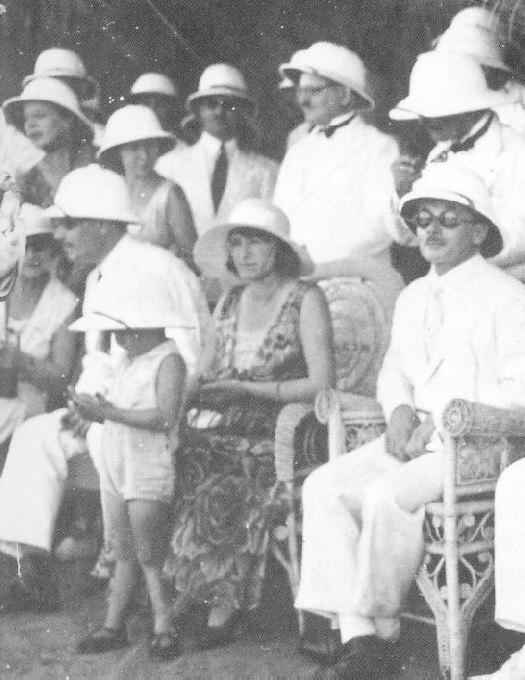
Figure 1.--This photograph shows a little French boy wearing a rather adult-looking pith helmet in French Guiana right before World War II began in 1939. Note the leather band on most of the front brims. |

|
Pith helmets are most associated with adult men, usually Europeans living and working in tropical countries. They were worn by both soldiers and civilians. The style appeared in the late-19th century and was worn through World War II (1939-45). As a result, it became strongky assiciated with colonialism. Italian soldiers in particular wore pith helmets during the War. There were different styles. Some were round while others were more enlogated. There were also differences in the size of the brim and crowns. While primarily an adult style, we have also noted boys wrearing them. For some reason there was a leather (I think) band over the front brim. A HBC reader reports that the leather on the pith helmet is related to attaching mosquito netting, but he is not 100 percent certain.
A HBC reader notes that the boy's outfit appears to be some sort of one piece sleeveless short suit. It is unxclear, but the outfit appears to button on the side. The sandals are worn without socks.
HBC at this time does not know about the origins of the pith helmet. A s best we can tell , the hat has ancuent origins. It came from the silacot worn by Filipino tribesmen. The Spanish who conquerd the Philippines adoped it for tropical miluatry wear as a kind of sun hat, allbeit with stylist cahanges to make it look less Asian. It was eventually adoopted for tropical military wear by the British and other Eurooeans. It was miost commin in the late-19th an early-20th century worn by the British in the Zulu War and the Bohr War.
Pith helmets are most associated with adult men, usually Europeans living and working in tropical countries. They were worn by both soldiers and civilians. The style appeared in the late 19th century and was worn through World War II (1939-45). Italian soldiers in particular wore pith helmets during the War. While they were mostly worn by men, women also wore them. Many women, however, prederred more stylish wide-brimmed hats. The pith helet, however, was mot just worn by adults. The little French boy in this image appears to be wearing an adult sized pith helmet. A HBC Australian reader, however, reports that they were also made in children's sizes and he wore one as a little boy 6-years old in the the 1940s. He reports that school children in Darwin wore them as part of their school uniform from about the early 1930s.
HBC generally associates pith helmets with the English, perhaps because of the Noel Coward ditty ("Only mad dogs and Englishmen go out in the mid-day sun ...."). Coward wrote this in the 1920s, poking fun at the English Raj. [Foh] This was the subject of much of Kipling's writing in the 19th century. A good example is Kim. The English had by far the largest colonial empire so there was no doubt more occassion for them to wear the pith helmet. We have noted pith helments also being worn by Germans, Italians, and the French into the mid-20th century during World War II We have also noted Americans in the South Paciufic wearing them in the World War II era. The pith helmet continued to be worn in World War II by various militaries, including the Americans in the South Pacifuic. European civilians in tropical countries wore a more rounded verion of the pith helmet. Tghety were oartuicukarly commin in Indua, although only by the Brritish, not the Indians. This became known as the Bombay Bowler. It did not survive much beyond World War II as it becanme so stringkly assiciated with colonialism. With the exception ironically by the North Vietnamese military during the Vietnamwese War. While mosty worn by men , we see some women and children in British colonies wearing them. Of course after World War by the 1950s we see fewer peopke wearing hats in general. The oprimary exceotuin is tht Bruitish opolice iffucers cintinue to wear them.
There were different styles. Some were round while others were more enlogated. There were also differences in the size of the brim and crowns. While primarily an adult style, we have also noted boys wrearing them. For some reason there was a leather (I think) band over the front brim. A HBC reader reports that the leather on the pith helmet is related to attaching mosquito netting, but he is not 100 percent certain.
Foh, Linda. E-mail message, March 11, 2004.
Navigate the Historic Boys' Clothing Web Headwear Pages:
[Return to the Main hat page]
[Return to the Main headwear page]
[Berets]
[Caps]
[Hair]
Navigate the Historic Boys' Clothing Web Site:
[About Us]
[Introduction]
[Activities]
[Biographies]
[Chronology]
[Cloth and textiles]
[Countries]
[Garments]
[Girls]
[Photography]
[Topics]
[Bibliographies]
[Contributions]
[FAQs]
[Glossaries]
[Images]
[Links]
[Registration]
[Search]
[Tools]
[Boys' Clothing Home]
